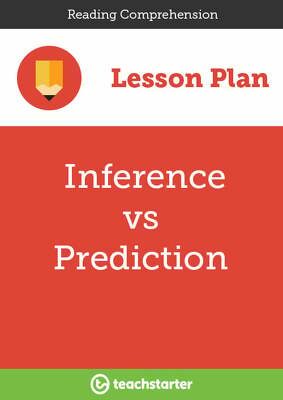Reading Comprehension Strategies Teaching Resources
Teach reading comprehension strategies your students can use for a lifetime with printable worksheets, reading passages, graphic organisers, task cards, Google Slide decks and more resources to help students learn to summarise, make connections, draw inferences and more!
Aligned with the Australian English curriculum (including version 9.0!), this teaching resource collection was created by Aussie teachers for primary teachers just like you!
Explore the whole collection, and you'll find editable versions designed to easily differentiate your instruction for individual students, plus a variety of options to make reading lesson planning easier this school year.
New to teaching this portion of the curriculum or just looking for fresh and engaging ways to teach reading comprehension strategies? Read on for a primer from our teacher team, including some strategies that can help your primary students, plus tips on working with EAL/D learners to build their comprehension skills.
What Are Reading Comprehension Strategies for Primary School?
As you well know, students don't start off being able to comprehend every single thing they read.
Teaching our students strategies to understand better and retain information will allow them to go from simply recognising individual words to understanding a range of texts and being power readers!
These strategies can help kids go from the early stages of developing critical thinking skills to preparing them for success in higher education and the workforce. All of these comprehension strategies can be taught and practiced explicitly.
8 Reading Comprehension Strategies That Build Students' Reading Skills for the Future
So, what are the most common strategies for reading comprehension? Our teacher team has broken down eight strategies to help your students build their reading skills.
1. Previewing
Previewing is the process of skimming the text before reading it in detail to get an overall sense of what it is about.
2. Activating Prior Knowledge
Employing this strategy, students draw on existing knowledge and experience to help them understand new information, such as a new text.
3. Making Connections
This strategy focuses on teaching students to connect a text with their own experiences and understandings. Research into the science of reading has shown enhanced comprehension when students can connect new information to information they already know.
4. Questioning
Learning to question is an important skill across various primary and secondary subjects, and developing this reading skill can help your students be better mathematicians and scientists — in addition to readers!
In this comprehension strategy, students ask and answer questions to clarify the meaning of the text and deepen their understanding.
When you centre questioning activities around the familiar open-ended prompts of who, what, when, where, how, why and which, students assert their understanding and identify any gaps in their comprehension of the text.
Questions can be posed by you — their teacher — by their peers or by the students themselves.
5. Visualising
Visualisation provides both teachers and students with another means to extend their exploration of a text and deepen understanding. This reading comprehension strategy asks students to create and describe an image in their mind centered around a place, situation or character in the text.
Visualising has been proven in research to improve student recall! Using the five senses is a great way to scaffold student comprehension through visualising.
6. Summarising
Summarising is a reading comprehension strategy that asks students to reflect on the text and communicate their understanding. A well-formed summary is made up of the text's main idea and the key details that support the main idea, showing that the student has understood what they’ve read well enough to write a summary that’s not just a complete repetition of the text.
When summarising, teach your students to complete one or more of the following steps:
- Recount the text in their own words
- Identify the main idea, topic or purpose
- List key words or phrases
- Identify structural elements of the genre
7. Inferring
The process of drawing conclusions based on clues or evidence presented in the text is called inferring or inferencing, and it involves readers using what they know and pairing it with what they read in the text to make a conclusion. You could also call this 'reading between the lines!'
8. Monitoring Comprehension
Monitoring comprehension requires our students to reflect on and assess their understanding as they progress through the text. In this metacognitive process, they should be asking themselves, 'Is this making sense?' or 'Do I need to read this again?'
- Some monitoring comprehension strategies that may be effective may include going back to reread a section of a text, slowing down or speeding up your reading rate and using text features to help understand difficult parts of a passage. All of these are active reading strategies that students can use to help them better understand what they are reading while they are reading!
The process of monitoring asks students to identify hurdles and barriers. With that in mind, we have found that our students tend to benefit most if we can connect this reading comprehension strategy with explicit strategies to help them pass those hurdles.

5 Reading Comprehension Strategies for EAL/D Students
Did you know that as much as half a million students in Australia are EAL/D learners? It's important to differentiate instruction to ensure their needs are being met in your classroom.
If you're teaching ELA and have English language learners in your classroom, you might want to employ some of these strategies to help them build their reading comprehension skills.
- Vocabulary Instruction — Explicit vocabulary instruction can help your ESL students understand the meaning of key words and phrases in the text. This is a building block of reading comprehension!
- Simplified Texts — Using simplified versions of texts, such as graded readers, can help English language learners build their confidence and their comprehension skills.
- Cooperative Learning — Working in small groups or pairs with other students gives EAL/D learners a chance to practise their reading comprehension skills and develop their language abilities through discussion and collaboration.
- Visual Aids — Using visual aids such as pictures, diagrams or videos can help students make connections between the text and their own experiences and break down language barriers.
- Graphic Organisers — Designed to help kids visualise relationships and organise their thoughts, mind maps, flowcharts and Venn diagrams can all help English language learners visualise the relationships between ideas in the text.
- Plus Plan

Summarising
A 60 minute lesson in which students will learn and apply the reading comprehension strategy of summarising.
- Plus Plan

Inferring
A 60 minute lesson in which students will learn and apply the reading comprehension strategy of inferring.
- Plus Plan

Inference vs Prediction
- Plus Plan

Little Red Riding Hood Story Video
Introduce a fresh version of the Little Red Riding Hood story to your students with this animated video perfect for younger students.
- Plus Plan

Alice in Wonderland Story Video
Introduce the story of Alice in Wonderland to your students with this animated fairy tale video perfect for younger students.
- Plus Plan

Goldilocks and the Three Bears Story Video
Explore the story of Goldilocks and the Three Bears with your students using this animated fairy tale video perfect for younger learners.
- Plus Plan

The Gingerbread Man Story Video
Introduce the story of The Gingerbread Man to your students with this animated fairy tale video perfect for younger students.
- Plus Plan

The Three Little Pigs Story Video
Explore the story of The Three Little Pigs with your students using this animated fairy tale video perfect for younger learners.
- Plus Plan

Jack and the Beanstalk Story Video
Introduce the Jack and the Beanstalk story to your students with this animated fairy tale video perfect for younger students.
- Reading Comprehension Strategies Worksheets
- Reading Comprehension Strategies Templates
- Reading Comprehension Strategies for Year 1
- Reading Comprehension Strategies for Year 2
- Reading Comprehension Strategies for Year 3
- Reading Comprehension Strategies for Year 4
- Reading Comprehension Strategies for Year 5
- Reading Comprehension Strategies for Year 6